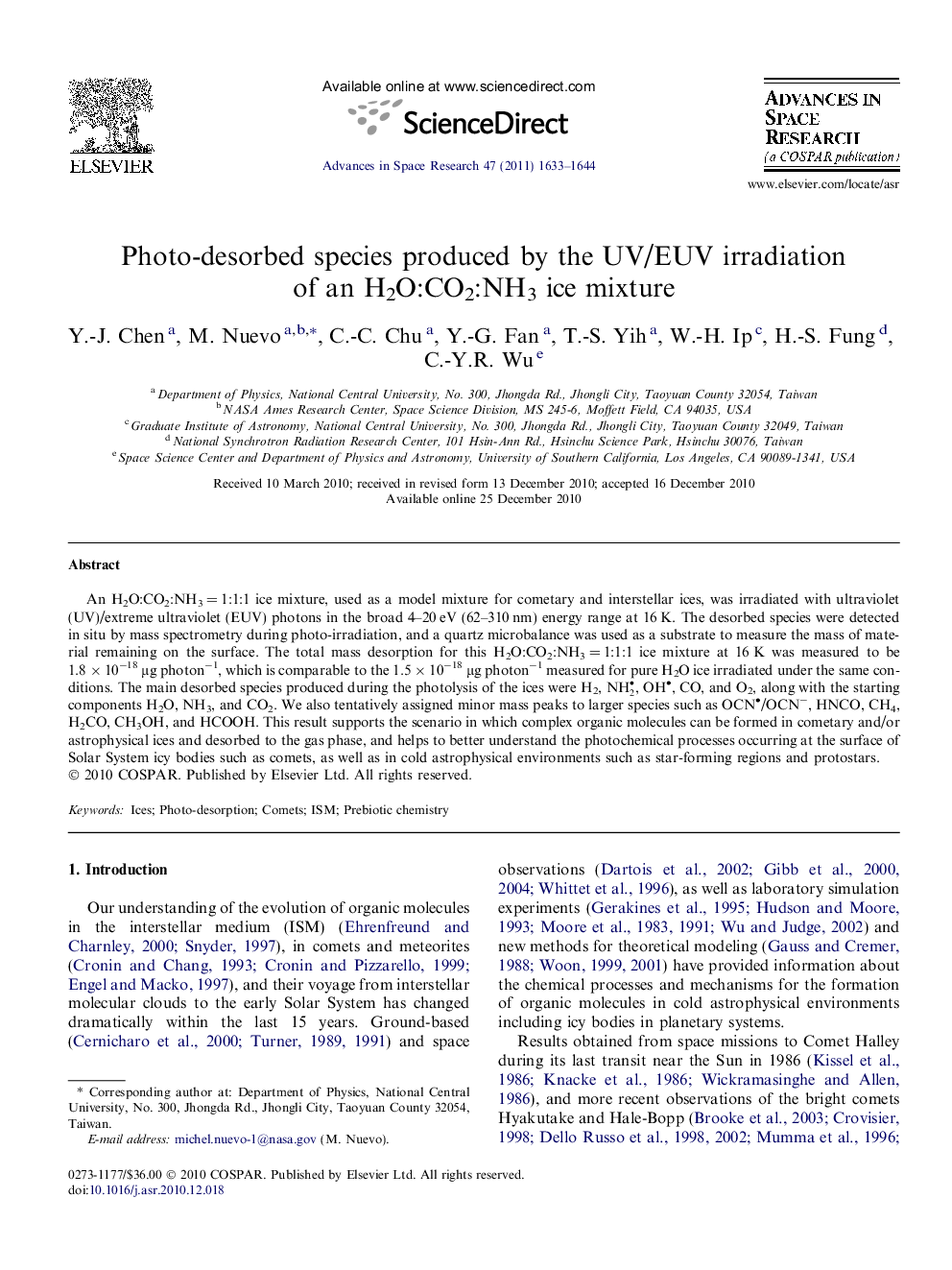| Article ID | Journal | Published Year | Pages | File Type |
|---|---|---|---|---|
| 1765736 | Advances in Space Research | 2011 | 12 Pages |
An H2O:CO2:NH3 = 1:1:1 ice mixture, used as a model mixture for cometary and interstellar ices, was irradiated with ultraviolet (UV)/extreme ultraviolet (EUV) photons in the broad 4–20 eV (62–310 nm) energy range at 16 K. The desorbed species were detected in situ by mass spectrometry during photo-irradiation, and a quartz microbalance was used as a substrate to measure the mass of material remaining on the surface. The total mass desorption for this H2O:CO2:NH3 = 1:1:1 ice mixture at 16 K was measured to be 1.8 × 10−18 μg photon−1, which is comparable to the 1.5 × 10−18 μg photon−1 measured for pure H2O ice irradiated under the same conditions. The main desorbed species produced during the photolysis of the ices were H2, NH2•, OH•, CO, and O2, along with the starting components H2O, NH3, and CO2. We also tentatively assigned minor mass peaks to larger species such as OCN•/OCN−, HNCO, CH4, H2CO, CH3OH, and HCOOH. This result supports the scenario in which complex organic molecules can be formed in cometary and/or astrophysical ices and desorbed to the gas phase, and helps to better understand the photochemical processes occurring at the surface of Solar System icy bodies such as comets, as well as in cold astrophysical environments such as star-forming regions and protostars.
